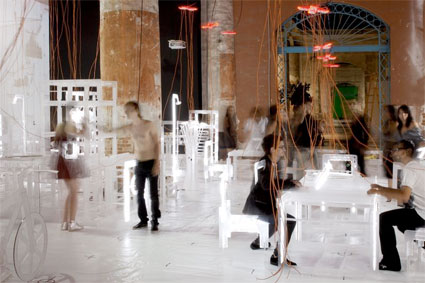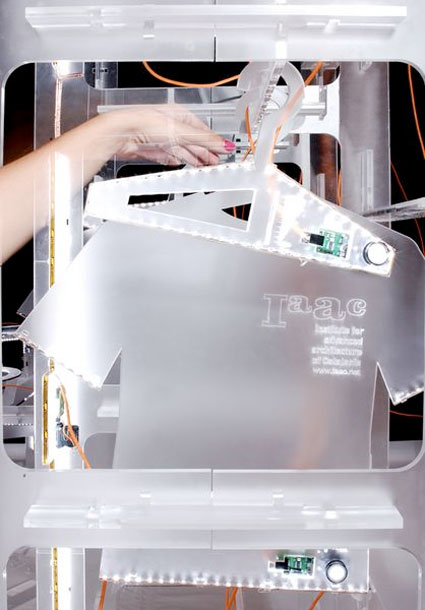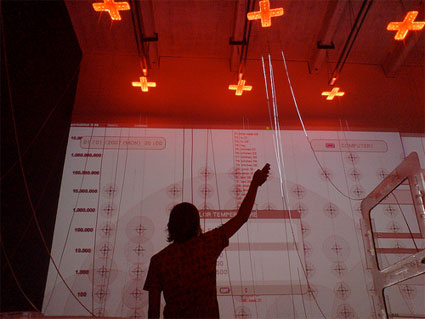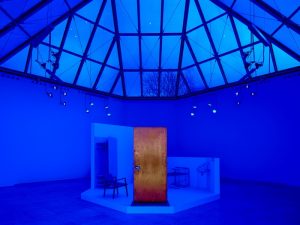The Arsenale section of the Venice Biennale of Architecture has many characteristics that makes it stand out from other architecture exhibitions. One of them is that you won’t get to see cardboard models and plans. In fact, you can even walk around and inside the 1:1 scale replica of an apartment building with sharing spaces.

All the furniture and appliances necessary have been fabricated from methacrylate and are embedded with microservers. It’s the return of the internet of things, baby!
Hyperhabitat. Reprogramming the World is a research project directed by Guallart Architects, initiated at IaaC (the Institute for Advanced Architecture of Catalonia) in 2005, with the BCN Fab Lab in collaboration with information designers Bestiario.
The project aims to propose answers to questions such as: Could our world be in habited on the basis of information technology? How could this be organized?
Just like a digital network is made of nodes and connections, Guallart’s model is a large-scale attempt to have all the elements of the physical world communicate with each other. The house functions as a small ecosystem, where each object is a piece of a widely distributed intelligence, able to interact with the others. Architecture becomes the interface that enables us to inhabit the world. The connections do not stop at the room level, objects also communicate with the whole building and can even interact with the neighbourhood or the rest of the world.

The microservers embedded in the objects interact with one another to generate relationships that are displayed as a large-format projection on one of the walls. Line codes can be drawn to suggest relationships or ‘line codes’ between nodes. In addition a special web platform, to be launched on November 24, will enable people around the world to put forward formulas for reprogramming the world.
 Image Daniel Aguilar
Image Daniel Aguilar
Hyperhabitat is the biggest Internet 0 (a new microserver technology developed at MIT to generate ambient intelligence by linking a series of miniature computers) network ever created. The project also builds upon the creation of and the theory of the multiscale habitat, an ‘urban genome’ project developed at IaaC that seeks to introduce new approaches to the generation of buildings and cities by restructuring the functional relationships between the constituent parts.
A key objective of this ‘reprogramming’ of buildings and cities is to use artificial intelligence in order to save energy and achieve a more self-sufficient model of living. As the architect explained to El Pais, the project tries to materialize the socio-economic changes that the world is currently undergoing, we are moving from a financial economy towards a production economy based on removing the price of objects in order to give them value. Guallart added: ‘The way to visualize this idea is to build dwellings which are self-sufficient, applying artificial intelligence to buildings.’ The architect is obviously aware that working at the building level is not sufficient if one wants to change the socio-economic structure of the world, action would have to be taken by working at the town-planning level (cf. Guallart’s Sociopolis project,a neighbourhood designed with a mind set on efficiency, functionality, digital networks.)
Slideshow of the images i took of the installation:
There’s a really nice video interview of the architect with views of the workshop where the installation has been entirely developed and built on 3cat24. But you might prefer a video presentation in english than in catalan:
More images on Daniel Aguilar’s flickr set, and on the project website.
Hyperhabitat is on view at the Arsenale, Venice until November 23rd, 2008.







